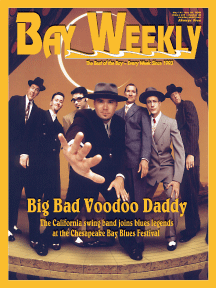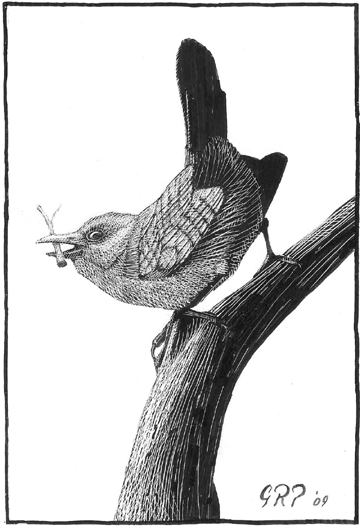
Volume XVII, Issue 20 # May 14 - May 20, 2009 |
 |
 |
Earth Journal by Gary Pendleton
May’s Backyard Bounty
No need to go looking; wrens will come to you
It was an early May morning, and I could have gone birding. I could have grabbed binoculars and gone to the wetlands. I could have jumped in the car to see the blooms and the leafing trees and the birds.
I didn’t have to. Another inch of rain had fallen the previous night, and the wetlands came to me.
In my back yard, I had wild blue phlox, May apples and the fading redbud. The fothergilla was blooming and the oak, maple and persimmon had on their bright green leaves.
Something caught my eye, and I grabbed the binoculars. Meanwhile I could hear a yellow warbler, redstart and a catbird. What I glimpsed, briefly, was some kind of warbler, but I saw it only for a second before it was gone. Typical warbler behavior: First I couldn’t see it, and then it flew away. My impression was ovenbird, but it could have been any number of species.
I searched for a while. It went like this: I would catch some movement, lift the binocs — and see a house wren, not what I was looking for. Every time I saw something flit in the leaves, it was the house wren.
I like wrens, but I was hoping to see that warbler because I had never seen one in the yard.
Wren’s Many Virtues
I do like the wrens, and I like the catbirds too. They are special to me even though they are not the colorful, elusive, tropical-looking spring migrants that are so much fun to find in the wild. I like them because they come to my place and they stay for a while. They settle in, build their nests and raise their young. I get to watch their comings and goings. After the yellow warbler and the redstart have moved on to the deep woods and extensive marshes that make up the wild places of the far-away-nearby, the house wren and catbird will be hanging out at my place.
There is a bird house on the fence that was made just for the house wren. The opening is just the right size, and the cavity is the correct depth to match the wren’s preferences.
The male wren is a busy little bird, and he sings an energetic, bubbly, yes very bubbly, song. Another thing to know about the male house wren: He aims to please.
The male house wren will build a series of dummy nests, one of which the female will select. The females show preference to males that build a lot of nests. So he will build in as many tight little places that he can find: bird houses, tea pots, shoes, buckets. He will fill the cavities with hundreds of little sticks. Where he finds all those little sticks, all about the same size and thickness, is beyond me. As the female inspects the nests, the male will hover nearby, watching, while she chooses.
You will know him by his loud, bubbly, rather long song. Or look for a very small brown bird with a slightly long, down-curving bill. The markings on both male and female are subtle, essentially brown stripes on a brown body. Don’t bother looking for the house wren at a wildlife sanctuary or park. The best way to find them is to put up a bird house now and listen for the song in your backyard.
|
Scientific names: Troglodytes aedon Where to look: Near human habitation What to look for: A small brown, active bird with a longish, down-curving bill What to listen for: A rapid, bubbly series of gurgles and trills |